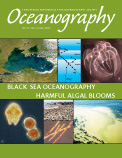First Paragraph
Coastal embayments are a broad category of an ecosystem type that may be loosely defined as an enclosed or semi-enclosed aquatic environment along a land-mass margin. Embayments are highly diverse, representing a spectrum of varying degrees of physical isolation from the open coast and hydrodynamic regime. Such systems include certain estuaries, lagoons, rías (“drowned estuaries”), firths, and fjords. At one extreme of the continuum, classic fjords, such as are found in Norway, Chile, and British Columbia, are typically deeply glaciated basins (often V-shaped) with steep sides, and are generally restricted to latitudes above 45° in both hemispheres. Fjordal water circulation patterns are characterized by surface outflow of buoyant freshwater, and an inward-bound compensation current, so-called estuarine circulation. Bottom water of fjords often tends to become anoxic, especially with the presence of a sill formed by excavated or scoured material accumulated towards the mouth of the inlet (Skjoldal et al., 1995) (Figure 1). By contrast, coastal lagoons, such as those found along the Mediterranean Sea (right), the Carolinas in the United States, and other parts of the Iberian coast, as well as in the tropics, are often shallow basins linked to the land’s margin, but lack the stratification parameters and circulation of fjords, and typically have a soft-bottom substrate.

